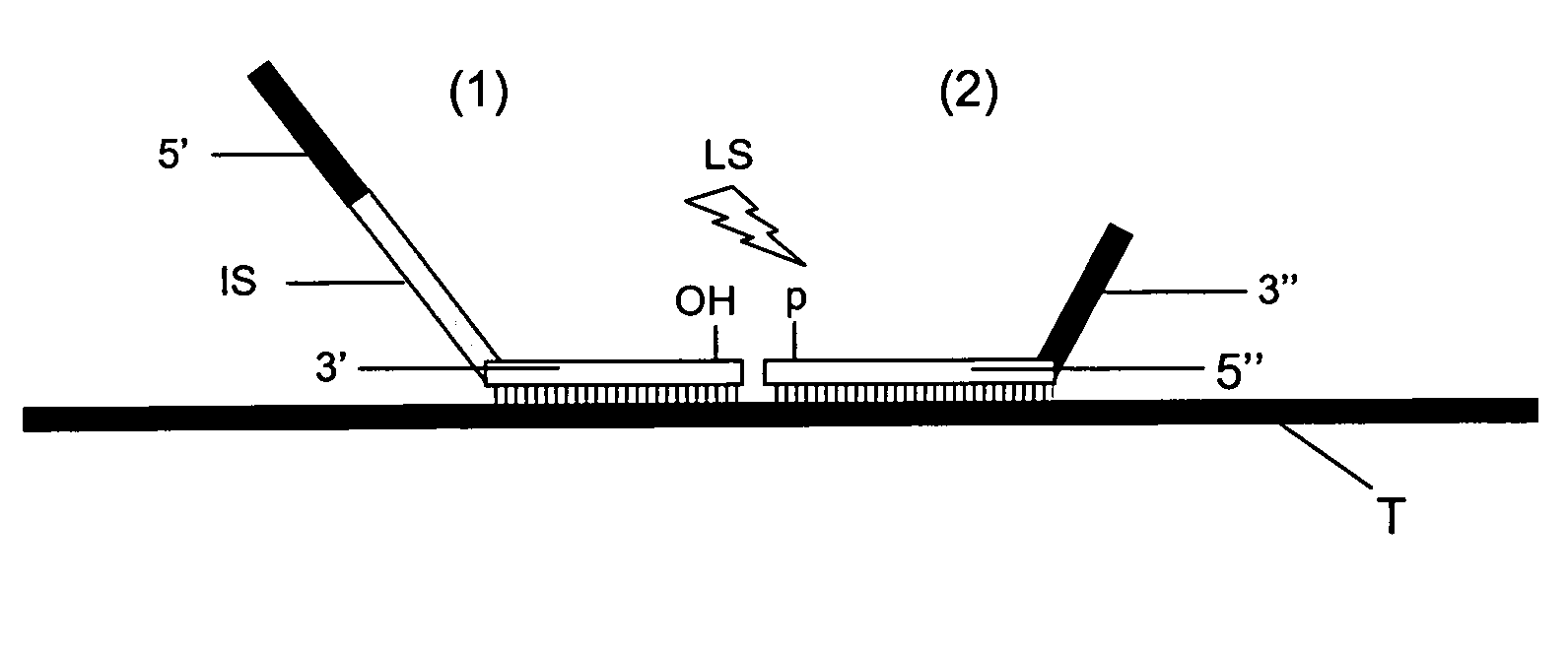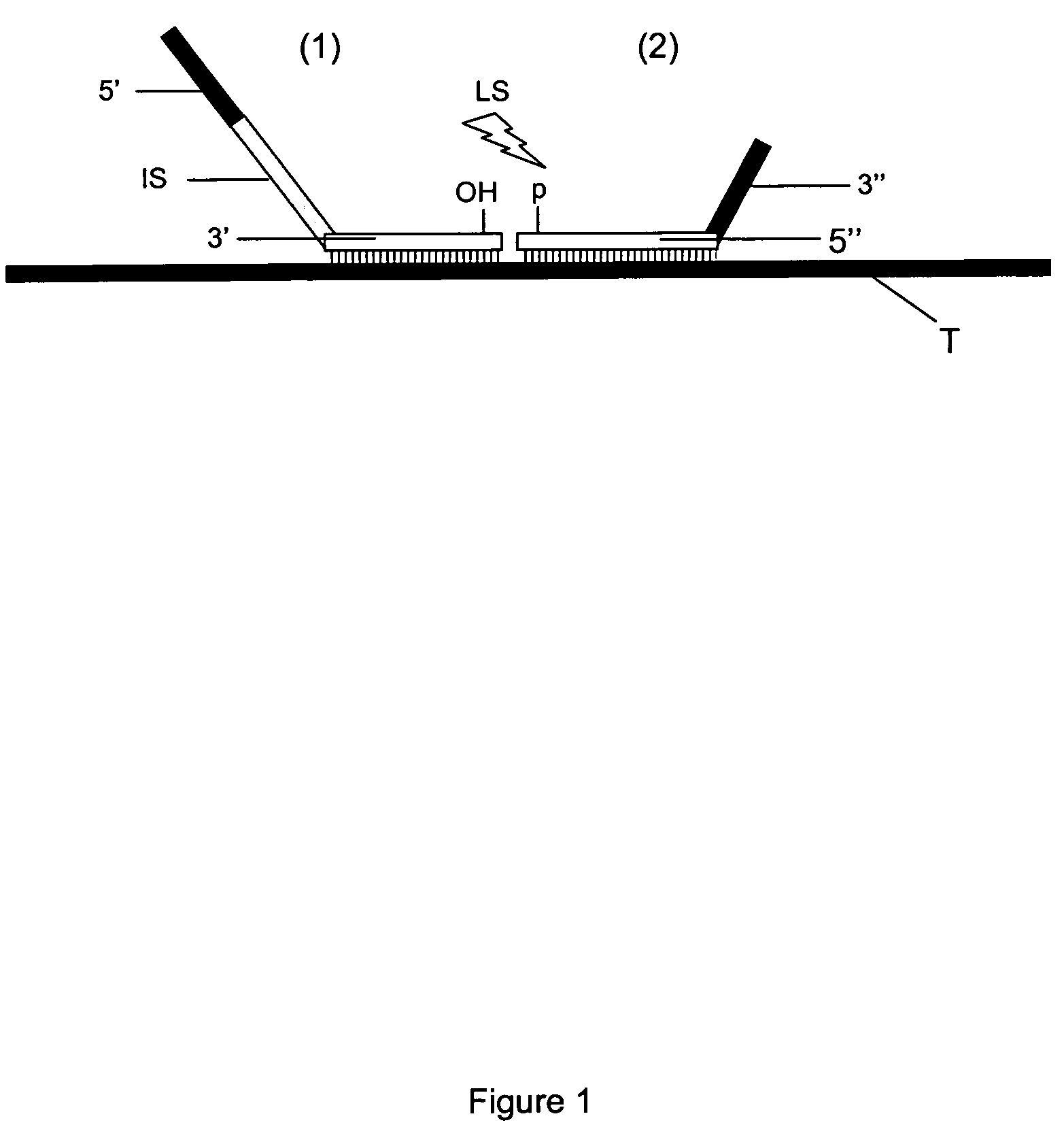Method for Detection and Quantification of Target Nucleic Acids in a Sample
a nucleic acid and target technology, applied in the field of detection and quantification of target nucleic acids in a sample, can solve problems such as affecting human health, affecting the normal biological function of cells, and errors in protein sequences, and achieve the effect of minimising secondary structure formation
- Summary
- Abstract
- Description
- Claims
- Application Information
AI Technical Summary
Benefits of technology
Problems solved by technology
Method used
Image
Examples
example 1
Assessment of the Feasibility for Analyzing Mitochondrial DNA (mtDNA) Mutations by Hybridisation of Ligation-mediated Probes on an Array with Detector Oligonucleotides
[0147]Material and Methods
[0148]1 Design of the Detector Oligonucleotides
[0149]The sequences of 124 detector oligonucleotides were designed based on the selection of artificial sequences with only three types of nucleotides. The design parameters were as follows:[0150]1. Size: 20 bases;[0151]2. % GC of probe 55;[0152]3. Tm of probe: 68 (° C.);[0153]4. Homology within the detector: between 2 and 4 bases;[0154]5. Homology amongst the 124 detectors: between 4 and 8 bases; and[0155]6. No significant similarity (homology less than 50%) blast against the human, chimp, mouse and rat specific sequences using the databases of genome (all assemblies) and RefSeq RNA at http: / / www.ncbi.nlm.nih.gov.
[0156]A 5T spacer was attached at the 5′ end of the oligonucleotides for each of 124 detector oligonucleotides.
[0157]2 Design of the De...
PUM
| Property | Measurement | Unit |
|---|---|---|
| Tm | aaaaa | aaaaa |
| wavelength | aaaaa | aaaaa |
| wavelength | aaaaa | aaaaa |
Abstract
Description
Claims
Application Information
 Login to View More
Login to View More - R&D
- Intellectual Property
- Life Sciences
- Materials
- Tech Scout
- Unparalleled Data Quality
- Higher Quality Content
- 60% Fewer Hallucinations
Browse by: Latest US Patents, China's latest patents, Technical Efficacy Thesaurus, Application Domain, Technology Topic, Popular Technical Reports.
© 2025 PatSnap. All rights reserved.Legal|Privacy policy|Modern Slavery Act Transparency Statement|Sitemap|About US| Contact US: help@patsnap.com



